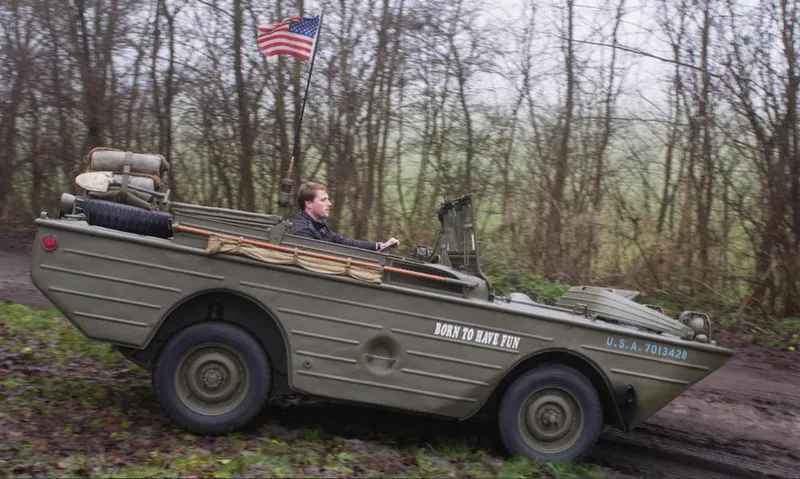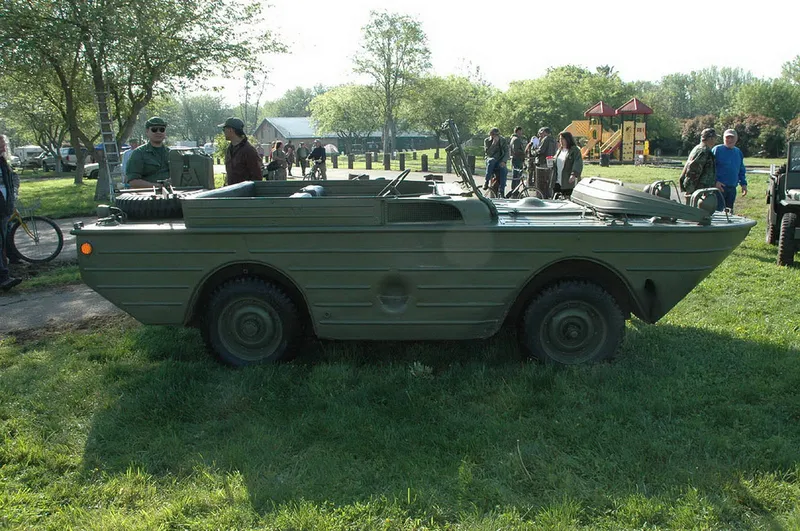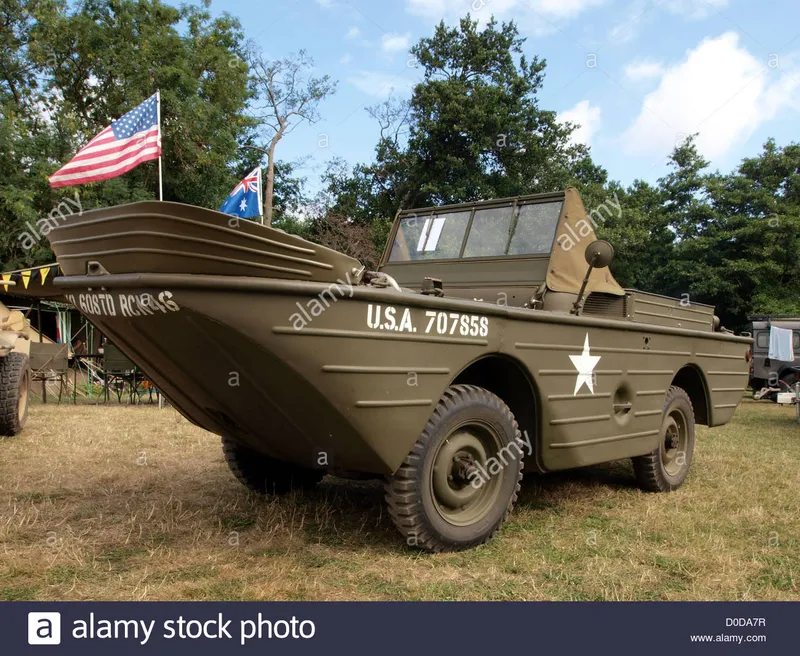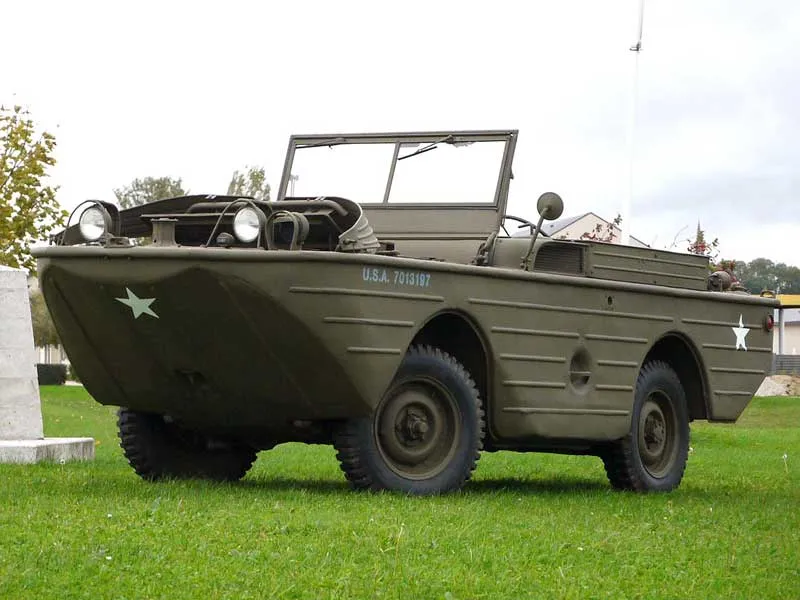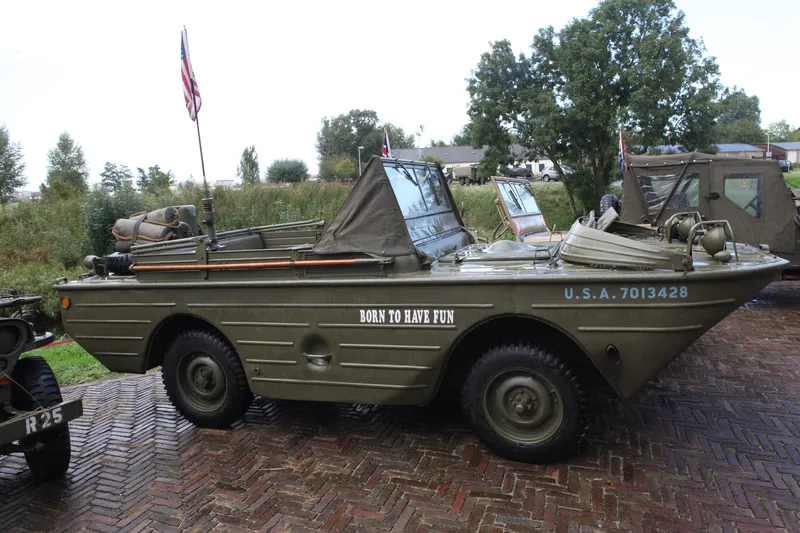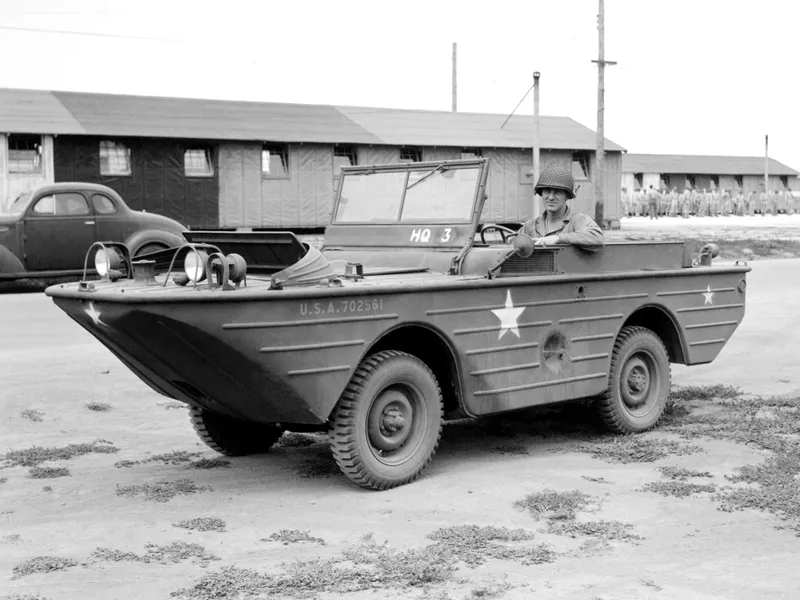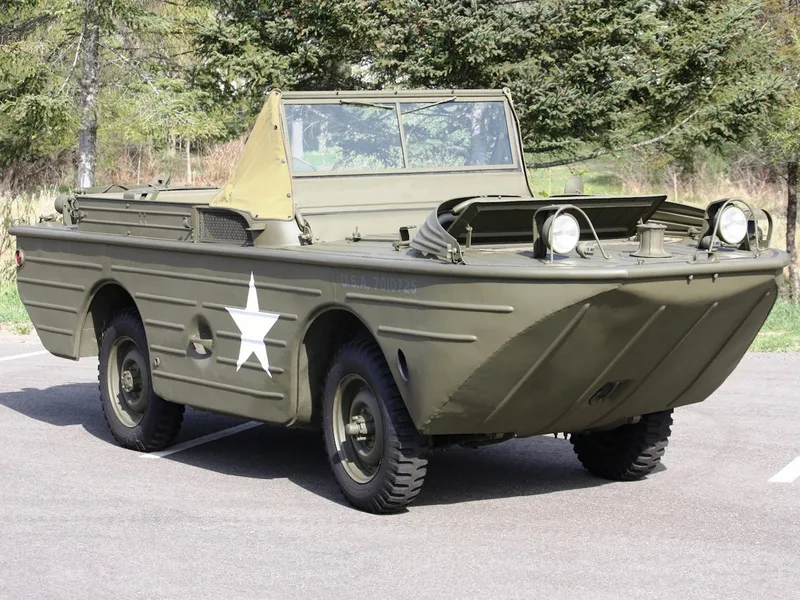
The Ford GPA, commonly known as the “Seep,” was an amphibious utility vehicle produced by Ford during World War II. It was designed to operate both on land and in water, providing versatility for military applications.
The GPA was based on the design of the Ford GPW, which itself was a derivative of the iconic Willys MB Jeep. Ford modified the GPW design to create an amphibious vehicle capable of traversing various terrains, including rivers, lakes, and coastal areas.
The GPA featured a boat-like hull, sealed compartments, and a propeller, allowing it to navigate in water. On land, it functioned similarly to a standard four-wheel-drive vehicle. Its amphibious capabilities made it valuable for military units needing to cross bodies of water during operations.
The vehicle’s design incorporated four-wheel drive and a robust engine, enabling it to handle different terrains with relative ease. However, its performance in water was often limited due to its weight and design, and it required calm waters for safe and efficient operation.
During World War II, the Ford GPA was used by various military branches, including the U.S. Army and Marine Corps, primarily for reconnaissance, transportation, and support roles. Its amphibious capabilities provided flexibility and facilitated river crossings and beach landings.
After the war, many Ford GPAs were decommissioned, with some finding their way into civilian hands. Despite its limited production and relatively brief service life, the Ford GPA remains a sought-after collectible vehicle among military history enthusiasts and collectors due to its unique amphibious design and association with World War II.


